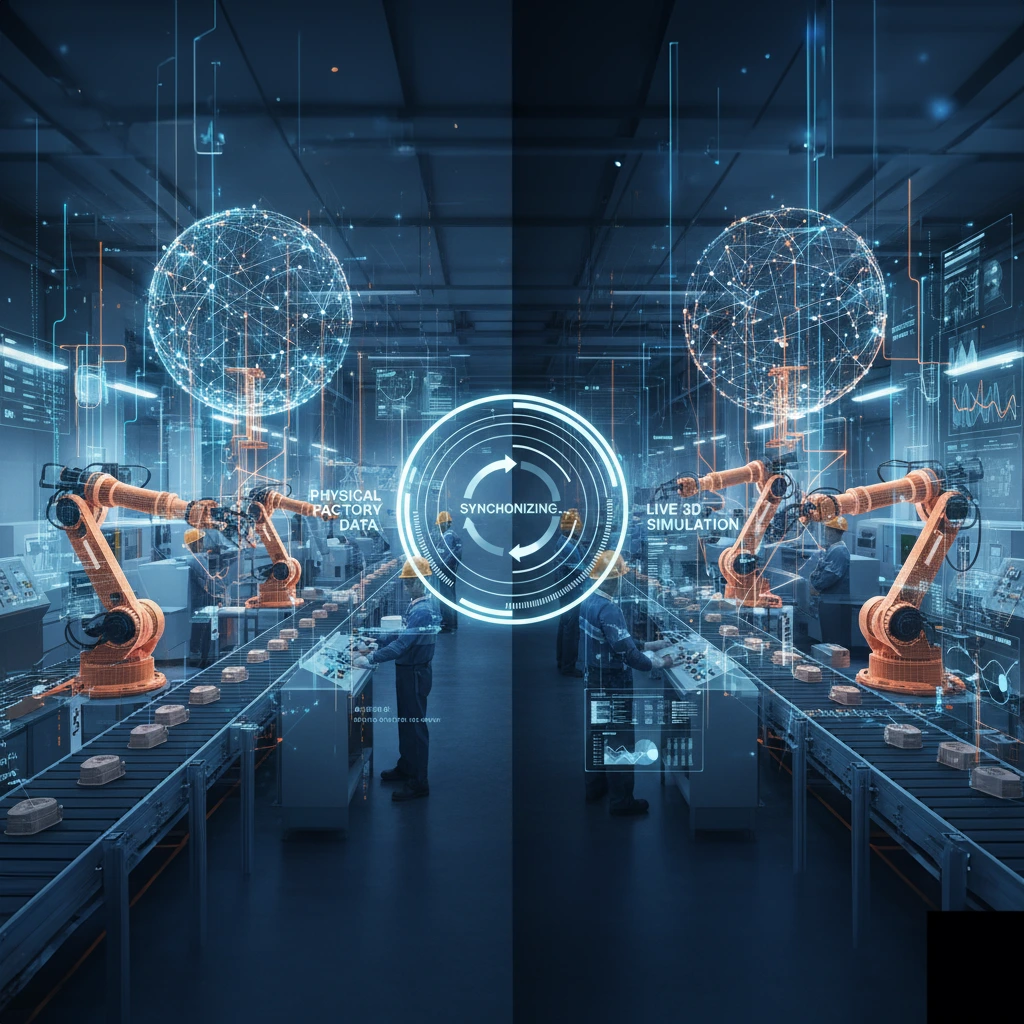The Rise of Industrial Digital Twins: Automating Your Connected Factory
Factory managers have always dealt with incomplete information about their operations. You know what happened yesterday based on reports. You know what's happening right now from monitoring systems. But predicting what will happen in the future or when you change some parameters requires guesswork. As a result, you cannot anticipate the outcome and must react to unseen complications.
This reactive approach costs money through unexpected equipment failures and unplanned downtime. Production adjustments get tested on actual equipment, risking expensive problems. Optimization happens through trial and error on the factory floor.
The shift needed is from reactive monitoring to predictive simulation using industrial digital twins.
What is an Industrial Digital Twin?
An industrial digital twin is a virtual model of physical equipment or an entire factory that updates continuously based on real-world conditions.
The manufacturing digital twin system relies on extensive IoT integration. Sensors throughout the factory measuring temperature, vibration, pressure, and other variables feed constant data streams into simulation models that understand the physics and mechanics of the physical assets.
This allows testing future scenarios and running what-if analyses without touching actual equipment. Want to know what happens if you increase production speed by 15% for eight hours? The digital twin can simulate it and show potential problems before you risk the physical machinery.
It creates an environment for testing, analysis, and optimization that wasn't possible with traditional monitoring.
Read Also: Industry 4.0 Explained: The Future of Manufacturing Is Here
What are the four types of digital twins?
The four main types represent different scales and complexity levels:
- Component Twins: Digital replicas of individual parts like motors or valves.
- Asset Twins: Multiple component twins combined to represent complete equipment or machinery.
- System Twins: Multiple asset twins integrated to model how equipment works together, such as an entire production line.
- Process Twins: The most complex type, modeling complete end-to-end processes and showing how different systems interact to create final products.
Most implementations start with component or asset twins for critical equipment rather than attempting full process modeling immediately.
Read Also: Key Applications of Digital Twin Technology in Healthcare
The Application: Digital Twin for Predictive Manufacturing
Real-time data feeds enable proactive, predictive approaches to manufacturing digital twins. Key applications include:
- Predictive Maintenance: Machine learning models applied to live IoT data and simulation results can predict equipment failures before they happen. This allows scheduling maintenance during planned downtime rather than scrambling when machines break during production runs.
- Risk-Free Simulation: Engineers can run virtual tests that would be expensive, disruptive, or dangerous on physical equipment. This includes simulating stress under different conditions, testing increased production speeds, or modeling the impact of new components.
- Process Optimization: The digital twin for predictive manufacturing enables continuous production line optimization. Teams can test new configurations and workflows virtually to identify bottlenecks without disrupting the physical factory.
This moves operations from "fix it when it breaks" to predictive, data-driven management, maximizing efficiency and minimizing downtime.
Click here to learn more about advanced digital twins and how they are being used by real businesses.
Frequently Asked Questions
What industries use digital twins?
Manufacturing remains the primary adopter, but many industries use this technology. Aerospace models aircraft engines and manufacturing processes. Energy sector manages wind farms and power grids. Automotive designs and tests new vehicles. Smart cities model urban infrastructure and traffic flow.
Industries with expensive equipment and high downtime costs adopt the technology more readily because ROI calculations are more compelling.
What are digital twins in process industry?
In process industries like chemicals or oil and gas, digital twins model and optimize complex continuous processes. They simulate chemical reactions, fluid dynamics, and thermal changes, allowing operators to test process adjustments virtually to improve yield, safety, and efficiency without risking the physical plant.
Is digital twin an AI?
Not exactly, though they're closely connected. A digital twin is a complex data model and simulation environment. The AI component consists of machine learning algorithms applied to the digital twin's data to generate predictions, identify anomalies, and recommend optimizations.
The digital twin collects and organizes data. AI analyzes that data to extract actionable insights. Both components are necessary for predictive capabilities that make the technology valuable.
Kavita has been adept at execution across start-ups since 2004. At KiKsAR Technologies, focusing on creating real life like shopping experiences for apparel and wearable accessories using AI, AR and 3D modeling


